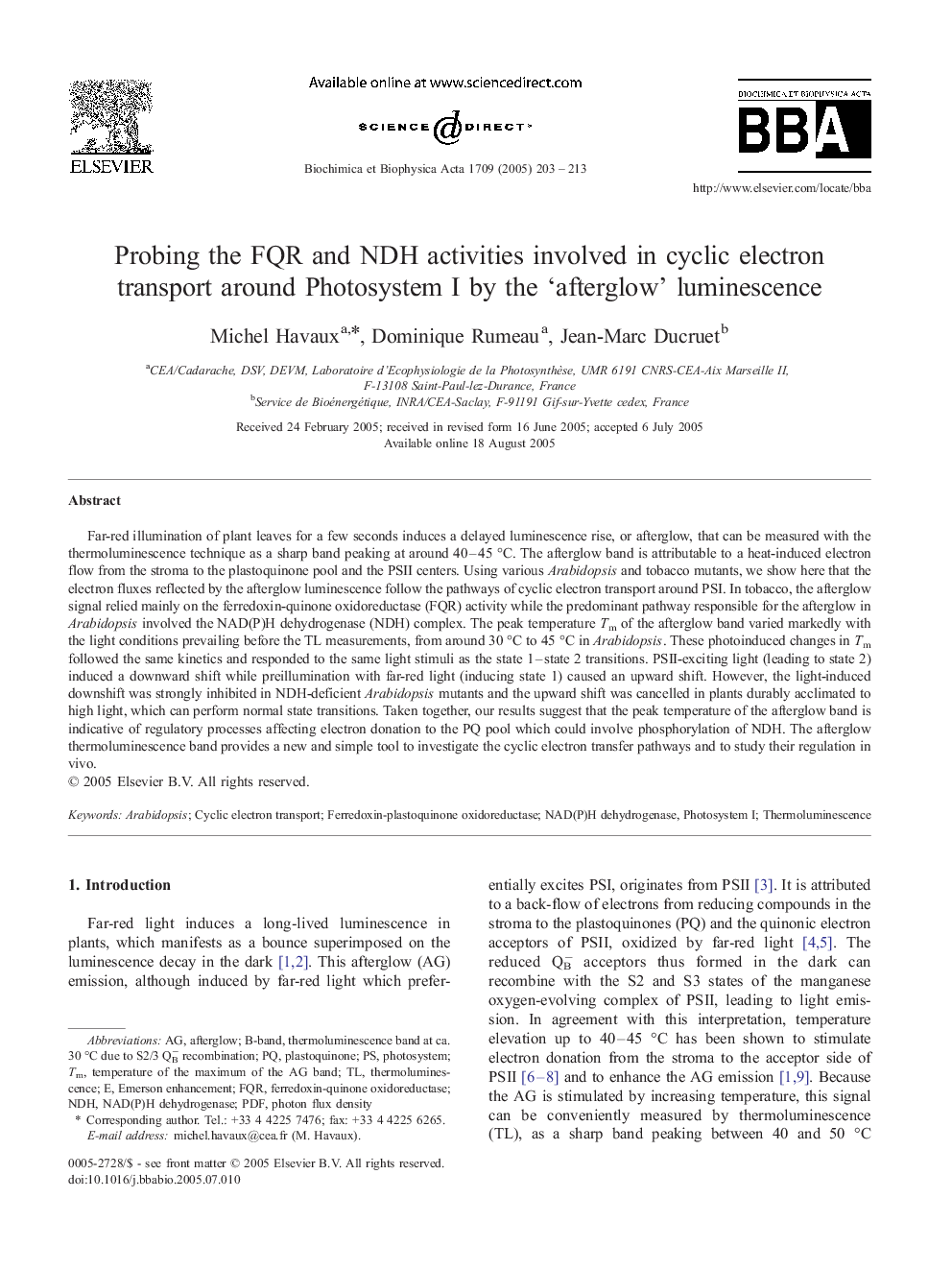| کد مقاله | کد نشریه | سال انتشار | مقاله انگلیسی | نسخه تمام متن |
|---|---|---|---|---|
| 10796069 | 1052690 | 2005 | 11 صفحه PDF | دانلود رایگان |
عنوان انگلیسی مقاله ISI
Probing the FQR and NDH activities involved in cyclic electron transport around Photosystem I by the 'afterglow' luminescence
دانلود مقاله + سفارش ترجمه
دانلود مقاله ISI انگلیسی
رایگان برای ایرانیان
کلمات کلیدی
موضوعات مرتبط
علوم زیستی و بیوفناوری
علوم کشاورزی و بیولوژیک
دانش گیاه شناسی
پیش نمایش صفحه اول مقاله

چکیده انگلیسی
Far-red illumination of plant leaves for a few seconds induces a delayed luminescence rise, or afterglow, that can be measured with the thermoluminescence technique as a sharp band peaking at around 40-45 °C. The afterglow band is attributable to a heat-induced electron flow from the stroma to the plastoquinone pool and the PSII centers. Using various Arabidopsis and tobacco mutants, we show here that the electron fluxes reflected by the afterglow luminescence follow the pathways of cyclic electron transport around PSI. In tobacco, the afterglow signal relied mainly on the ferredoxin-quinone oxidoreductase (FQR) activity while the predominant pathway responsible for the afterglow in Arabidopsis involved the NAD(P)H dehydrogenase (NDH) complex. The peak temperature Tm of the afterglow band varied markedly with the light conditions prevailing before the TL measurements, from around 30 °C to 45 °C in Arabidopsis. These photoinduced changes in Tm followed the same kinetics and responded to the same light stimuli as the state 1-state 2 transitions. PSII-exciting light (leading to state 2) induced a downward shift while preillumination with far-red light (inducing state 1) caused an upward shift. However, the light-induced downshift was strongly inhibited in NDH-deficient Arabidopsis mutants and the upward shift was cancelled in plants durably acclimated to high light, which can perform normal state transitions. Taken together, our results suggest that the peak temperature of the afterglow band is indicative of regulatory processes affecting electron donation to the PQ pool which could involve phosphorylation of NDH. The afterglow thermoluminescence band provides a new and simple tool to investigate the cyclic electron transfer pathways and to study their regulation in vivo.
ناشر
Database: Elsevier - ScienceDirect (ساینس دایرکت)
Journal: Biochimica et Biophysica Acta (BBA) - Bioenergetics - Volume 1709, Issue 3, 30 September 2005, Pages 203-213
Journal: Biochimica et Biophysica Acta (BBA) - Bioenergetics - Volume 1709, Issue 3, 30 September 2005, Pages 203-213
نویسندگان
Michel Havaux, Dominique Rumeau, Jean-Marc Ducruet,